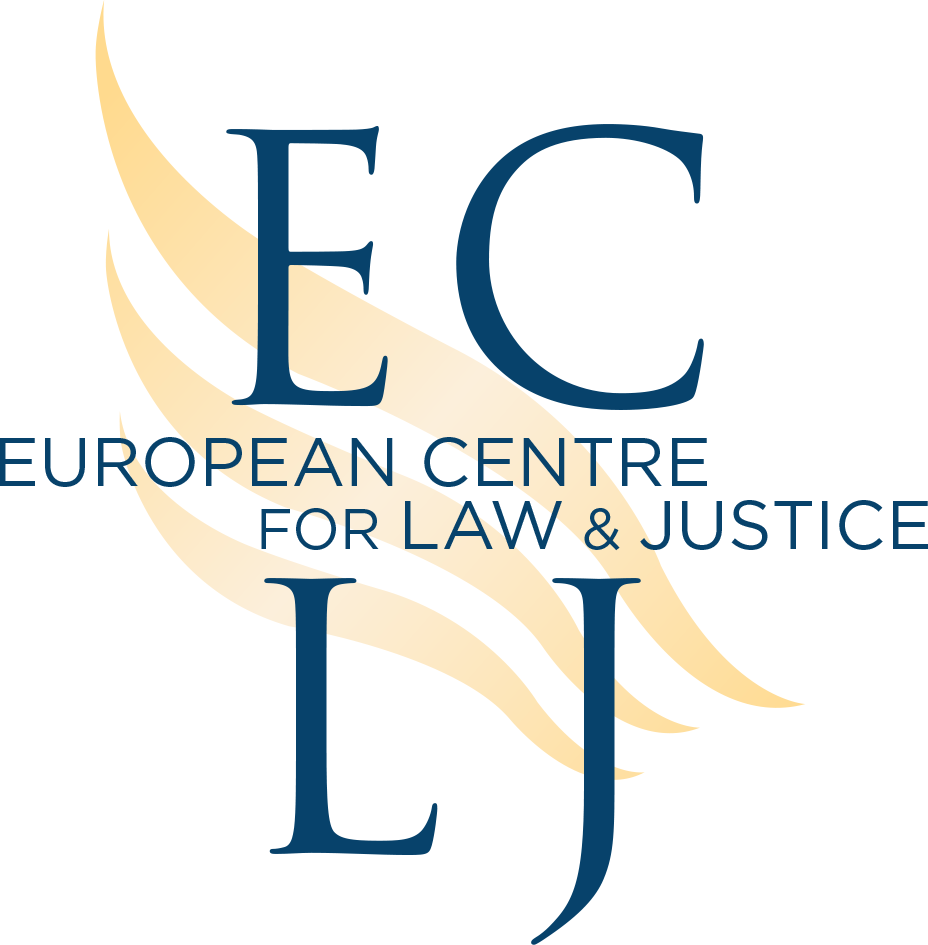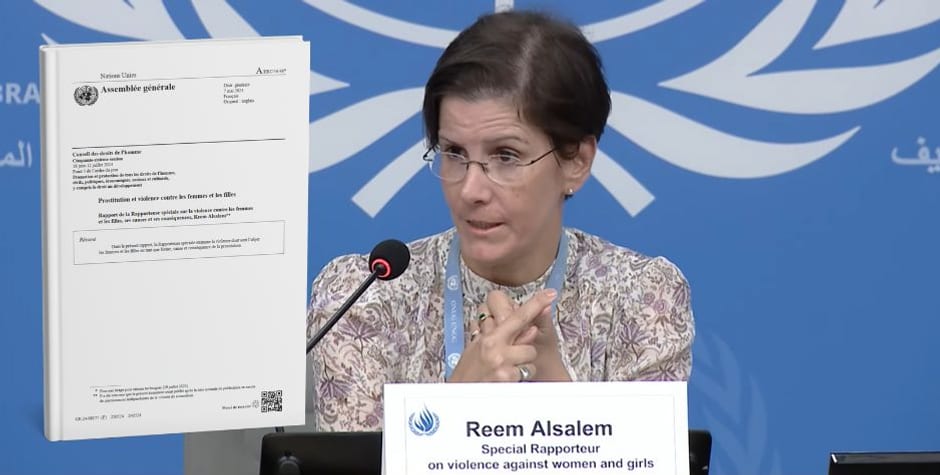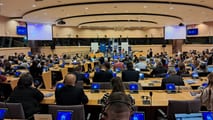Should pornography be abolished? The answer is yes for Reem Alsalem, UN Special Rapporteur on violence against women and girls, its causes and consequences. This is the conclusion of her report entitled “Prostitution and violence against women and girls”, presented to the UN Human Rights Council on June 21, 2024.
The European Centre for Law and Justice (ECLJ) welcomes the publication of the report “Prostitution and violence against women and girls”. The report is remarkable because, with clear-sightedness and courage, Mrs. Alsalem advocates the adoption of an abolitionist legal framework for prostitution and pornography, in order to better help and protect victims. She bluntly concludes that “States must avoid becoming “pimp States” by abolishing laws that allow, tolerate or condone the violence and exploitation in the prostitution system and pornography” (§ 54). With regard to pornography in particular, she paints a bleak but realistic picture, proving that it is intrinsically harmful. She strongly recommends that States “adopt international legislation to abolish pornography and its consumption”, as well as “regulations that comprehensively target pornographic content and explicitly criminalize the possession, production or hosting of material as they violate the right to life and dignity, and constitute torture or inhumane or degrading treatment” (§ 57a). The ECLJ shares the vision and recommendations put forward by the Special Rapporteur, which corroborate in every respect its own work.
Pornography, a variant of prostitution and a form of human trafficking
Far from treating pornography as a mere cinematographic genre, Mrs. Alsalem points out that it must be considered as a form of sexual exploitation (§ 49) and as a variant of prostitution (§ 57a), pornography being “understood to be filmed prostitution” (§ 3).
Like the ECLJ, the Special Rapporteur sees pornography as a hub for human trafficking. On the one hand, she shows that pornography is based on trafficking, “Given minimum regulation (...). In December 2023, after a federal investigation in the United States, Aylo Holdings (formerly MindGeek) admitted that it had profited from sex trafficking, agreed to pay a fine of $1.8 million in order to avoid criminal prosecution for profiting from sex trafficking videos on its site.111 OnlyFans also reportedly has accounts that indicate the individual is being trafficked, and plays the role of the pimp in a commercial exchange, while strives to increase the e-pimps in the supply chain” (§ 25). The Special Rapporteur explicitly calls these online platforms into question, declaring them “complicit in facilitating exploitation from certain segments of the industry, like pornography and sexual services” (§ 53). She thus recommends that States “Hold businesses and industries accountable for their role in the exploitation of prostitution”, “close websites that promote trafficking in women and sexual exploitation, and disrupt the business model of websites advertising prostitution” (§ 55x), as well as “sanction pornography and social media sites for hosting illegal pornographic sites” (§ 57b).
On the other hand, Mrs. Alsalem underlines that pornography encourages trafficking insofar as it feeds prostitution: “More frequent users of pornography were also the most frequent users of women in prostitution. Many adolescent boys seek out prostituted women and girls to be “sexually initiated”” (§ 18).
Consent, a bogus argument
In this context, the Special Rapporteur recalls that “International law has established the issue of “irrelevance of consent” within the framework of trafficking crimes and the exploitation of the prostitution of others” (§ 50). She refutes the argument of proponents of the liberalization of prostitution and pornography that some people become prostitutes or pornographic actors by voluntary choice. In most cases, their consent is in fact underpinned by money: “The payment and/or promise of payment is the most visible sign of a person being purchased rather than freely giving consent” (§ 50). Far from being a choice, it is rather a necessity, for if the person were in a different financial, family or social situation, his or her “choice” would also be different. Moreover, it is not uncommon for this supposedly free consent to be extorted by various means: “testimonies of many individuals who report that they had agreed to engage in prostitution on their own reveal patterns of abuse of vulnerability and power, manipulation or coerced prostitution or trafficking while in it, or have been enticed through “lover boy” or other “romantic” relationships” (§ 50). In its conclusions, the report states that “a financial transaction [is] designed to materialize so-called “consent” that cannot be expressed freely in the prostitution system. In this context, the very concept of “consent” is weaponized against women in prostitution, as it is extorted through physical or economic coercion, manipulation and violence” (§ 52). The Special Rapporteur is largely vindicated by current events. She therefore recommends that States “note that the criminalization of the exploitation of the prostitution of another person is effective even with the consent of that person, thus validating the irrelevance of the concept of consent in the context of prostitution” (§ 55b).
Pornography: a violation of the dignity of the persons depicted
The Special Rapporteur also highlights the fact that prostitution and pornography violate human dignity because of the violence that is consubstantial with them. She states: “Prostitution results in egregious violations of human rights and multiple forms of violence against women and girls, who they are often dehumanized and perceived as persons without human rights. Prostitution violates the right of women and girls to dignity, and often constitutes torture, inhuman and degrading treatment” (§ 10). To illustrate this link, she lists a long string of acts of violence suffered by prostitutes: insults, sexual abuse, rape, beatings, kidnapping, mutilation, denial of remuneration, exploitation, slavery, death threats, murder, etc. (§ 10-12). Next comes the enumeration of the serious consequences of prostitution, including loss of the right to privacy, freedom of movement, the right to a family, social isolation, lack of stable migratory status, negative impact on physical health (reduced life expectancy, exposure to sexually transmitted diseases, forced abortion and sterilization, diseases of the genital and digestive systems, etc.), as well as on mental health (depression, eating disorders, drug addiction, etc.) “which often lead to suicide” (§ 13). On this point, it is noted that “the consequences of prostitution for mental health are similar to those of victims of torture” and that, “According to a study conducted in nine countries, 68 per cent met the criteria for post-traumatic stress disorder” (§ 13).
Turning more specifically to pornography, the Special Rapporteur notes the “lasting physical disabilities” caused by the brutal acts very often practiced (§ 10), as well as the physical harm and venereal diseases often reported (§ 15). She points out that violence is omnipresent in pornography: “An analysis of popular pornography videos completed in 2010 uncovered that 88.2 per cent of scenes contained acts of physical assault (...); 48.7 per cent contained acts of degrading verbal name-calling” (§ 15). Concerning AI-generated pornography, it is reported that “more than 96 per cent of [it] was produced without the consent of the individual featured. In 2022 alone, there were over 100,000 computer-generated non-consensual images of women online”; this practice particularly victimizes “adolescents, especially girls” (§ 15).
The harmful effects of pornography on its consumers
With regard to pornography consumers, the Special Rapporteur refers to consequences such as addiction, reduced sexual satisfaction, altered sexual expectations, etc. She points out that “Users of pornography require more novel, extreme forms of violent content to achieve the same level of arousal. Virtual reality pornography may make it more difficult to find pleasure in real-life sexual encounters” (§ 19). Similarly, “The wide reach of pornography and its negative impact on shaping the sexual expectations of men and boys should not be underestimated” (§ 20).
Mrs. Alsalem also highlights the dangers of children’s increasingly early exposure to pornography: “in 2018, the first exposure to pornography among males is at 12 years of age, on average” (§ 20). She notes that this has resulted in the “quadrupling of underaged victims of sexual offences over the past decade, where the victims are mainly girls”, as well as “an increase in the sexual exploitation and prostitution of children”, particularly girls “trapped into prostitution younger and younger, including some as young as 8 years of age” (§ 21). States are therefore recommended to “immediately remove sexual images of minors and digitally facilitated pornography that might be accessible in any way to minors” (§ 57a). It is also up to them, “Pending the abolition of pornography, [to] apply a strict age verification system on all online pornography, rigorous moderation, labelling and warning systems; mandate filtering by Internet service providers with options for adult opt-in” (§ 57b). The ECLJ is thus delighted to note that these recommendations, which go in the direction of greater limitation of access to pornography in view of the damage it causes to its consumers, correspond to those put forward by the ECLJ in the report “Combating pornography. Volume 1: Regulating access to pornography” (September 2023).
The large-scale harmful consequences of pornography
In the same report, the ECLJ showed that, far from being confined to consumers and to the people portrayed, the effects of pornography are felt on a large scale in a society steeped in pornography. Here again, the Special Rapporteur fully agrees with these observations.
Regarding the influence of pornography on society, she refers to the ““Pornified” visual landscape” (§ 24) and some telling figures: “It is estimated that 28,258 users are watching pornography every second, and 35 per cent of all Internet downloads are related to pornography. A 2020 study by a digital marketing company noted that MindGeek’s Pornhub was the technology company with the third-greatest impact on society in the twenty-first century” (§ 20). She also regrets that “Despite their global impact, other forms of sexual exploitation, such as pornography, have not been adequately addressed in international law” (§ 49).
While pornography makes sexuality rhyme with brutality, it is recognized that it contributes to the normalization of sexual violence. This phenomenon is accentuated in the case of pornography generated by artificial intelligence, which “further distorts what constitutes normal sexual interaction, encouraging viewers to adopt more harmful sexual attitudes” (§ 19). As the Special Rapporteur notes, pornography “erases the boundaries between what counts as sex and what counts as sexual violence. The violence enacted against women in pornography (…) is often re-enacted against girls and women by those who consume pornography in the physical world” (§ 18). Consuming pornography thus encourages violent behavior, particularly towards women. On this subject, the report mentions that “A meta-analysis conducted in 2015 found that exposure to non-violent and violent pornography resulted in increases in both attitudes and supporting aggression and actual aggression against women and children”; it is thus argued that “The increase in rape, including gang rape, can be linked to the increased male consumption of pornography” (§ 18).
In addition to the increase in violence against women, the normalization of prostitution and pornography affects the status of women as a whole, as a means of commodifying them and undermining their equality. As Mrs. Alsalem puts it: “The equal participation of women in society is impossible to achieve when prostitution is normalized and fundamentally based on an inequality between women and men. (...) Prostitution (...) bears a deeply archaic and sexist vision of the role of women and of the relations between women and men (...). The existence and normalization of prostitution is also a fundamental obstacle to sexuality based on equality” (§ 23). With regard to pornography in particular, the Special Rapporteur calls into question online pornographic platforms which “normalize and promote male domination over women and enforce patriarchal gender roles” (§ 24). In particular, she forcefully denounces the hypersexualization and indoctrination of young people, especially girls, in a pornified world whose codes it becomes essential to adopt: in particular, “Young women are groomed into sexual self-exploitation. “Pornified” visual landscape indoctrinates girls and women into a patriarchal mindset that the only way to be visible – in fact valuable – is to be sexually desired, “hot” and “pornified”” (§ 24). Mrs. Alsalem concludes that “Attempts to ignore the devastating causes and consequences for women and girls and wider society are an extension of the historic normalization of women’s stereotyped role in society and the commodification of female sexual and reproductive capacities” (§ 52).
In the name of human dignity and from a feminist perspective of women’s liberation and equality between women and men, it would therefore be appropriate not to liberalize prostitution and pornography, but to abolish them. What is lacking, however, is any real cohesion and a truly global movement to achieve this. With this in mind, this report is a further step in raising awareness of the harmful effects of pornography. It complements or justifies various recent initiatives at European level, such as the report and resolution of the Parliamentary Assembly of the Council of Europe on “The protection of children against online violence”, which accuse pornography, or the decisions of the European Commission designating four pornographic platforms as very large online platforms within the meaning of the Digital Services Act. Internationally, it represents a new milestone on the road to the abolition of pornography.













